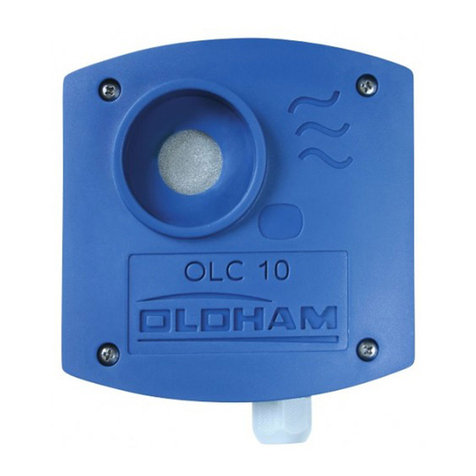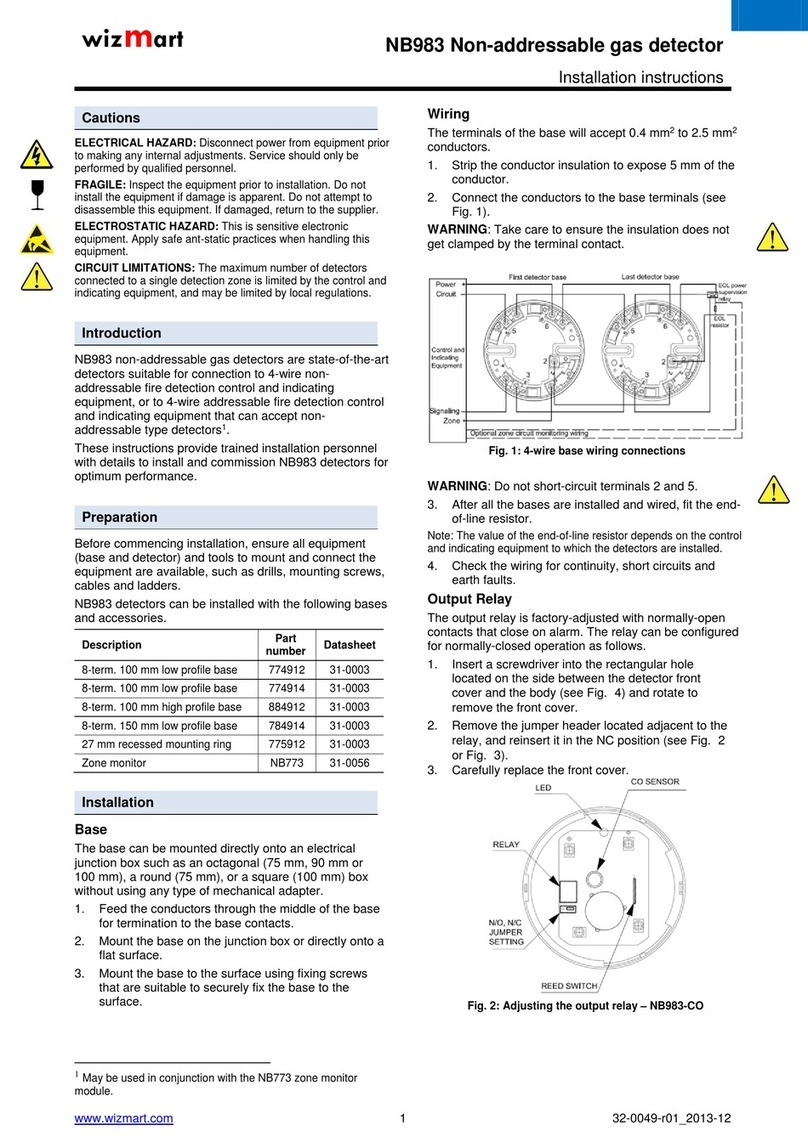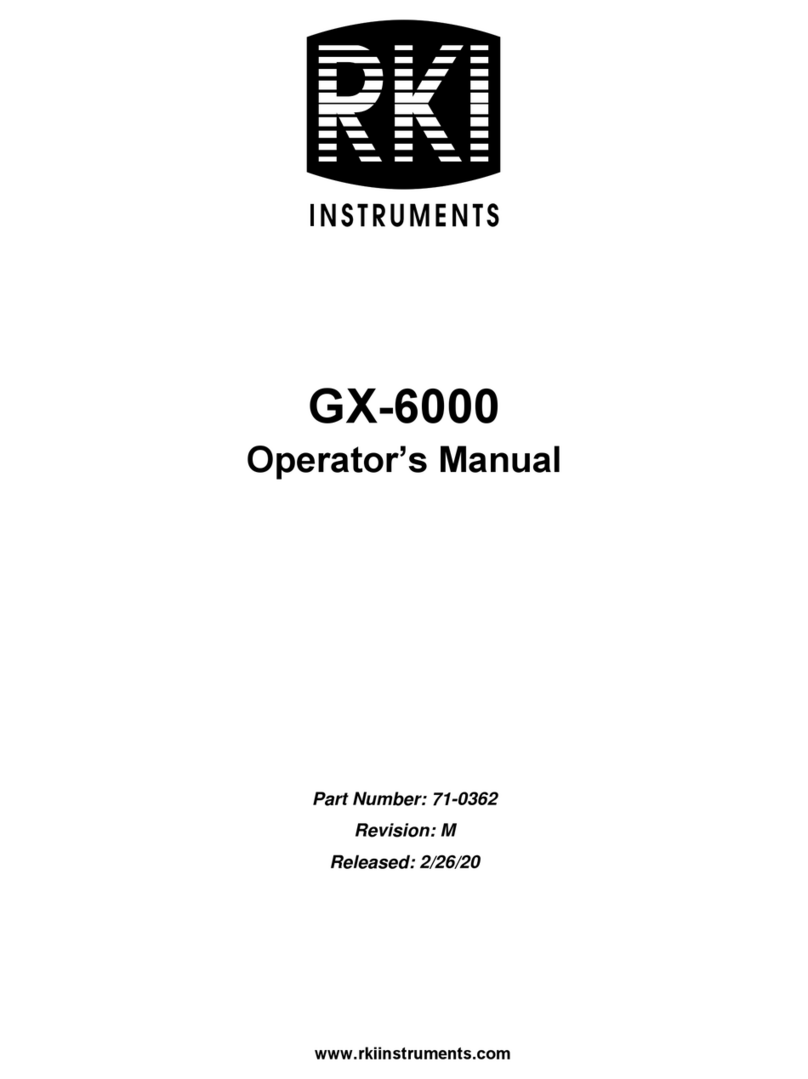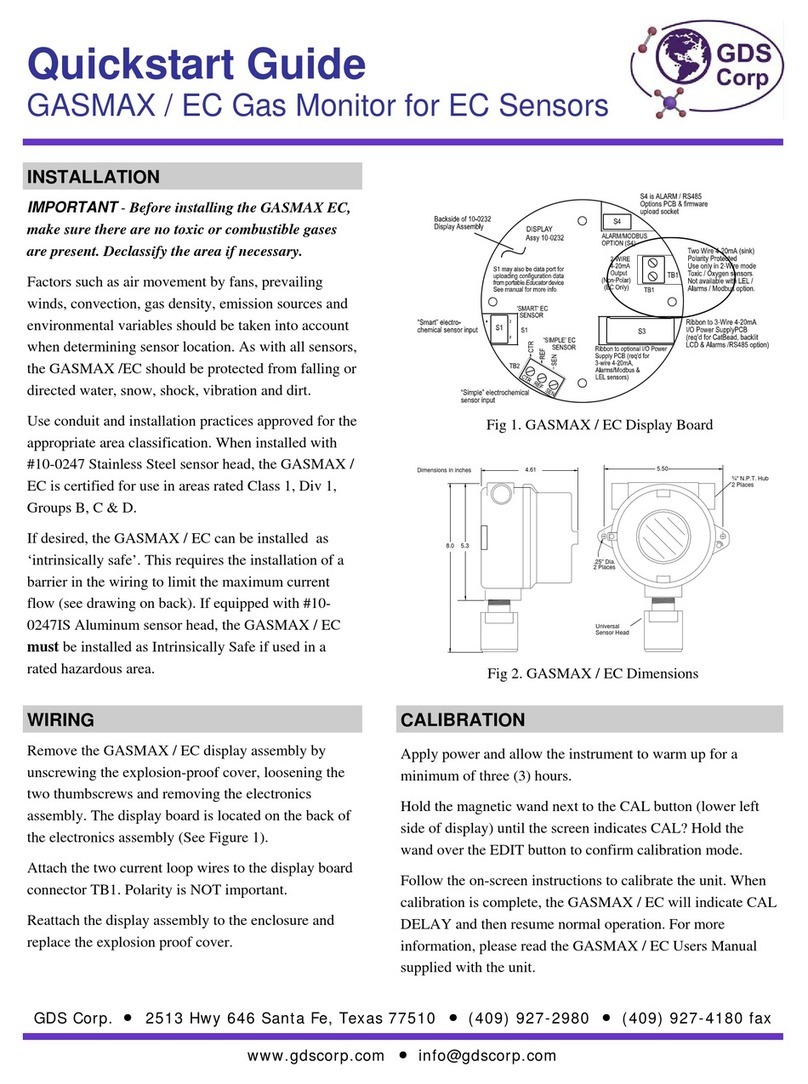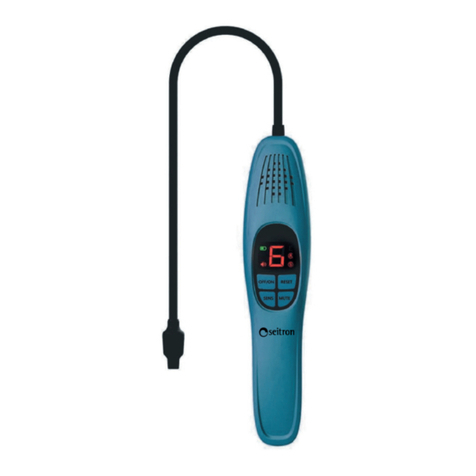
20
Carrying out the bump test
Prepare a test gas cylinder, the volume flow must be 0.5 l/min and the gas
concentration must be higher than the alarm setpoint concentration to be
tested.
Connect the test gas cylinder to the calibration cradle (order no. 83 18 752).
Switch on the instrument and insert it into the calibration cradle– press
downwards until it engages.
Open the test gas cylinder valve to let test gas flow over the sensors.
Wait until the instrument displays the test gas concentration with sufficient
tolerance – E. g.
IR Ex: ±20 % of test gas concentration1)
IR CO2: ±20 % of test gas concentration1)
O2: ±0.6 vol. %1)
TOX: ±20 % of test gas concentration1)
– If the alarm setpoints are exceeded, the instrument displays the gas
concentration in alternation with »A1«or »A2«depending on the test gas
concentration.
Close the test gas cylinder valve and remove the instrument from the
calibration cradle.
If the displays are outside of the above-mentioned ranges:
Have the instrument adjusted by the service personnel.
NOTICE
In the case of a manual function test the effect of the H2added signal must be
taken into account accordingly.
NOTICE
A potentially activated H2added signal is automatically temporarily deactivated
during a manual calibration, a PC calibration or an automatic Bump Test for the
relevant duration.
NOTICE
The automatic function test with the Bump Test Station is described in the
Instructions for Use of the Bump Test Sation and in the Technical Handbook.
WARNING
Risk to health! Do not inhale the test gas.
Observe the hazard warnings of the relevant safety data sheets.
1) Upon application of the Dräger mixed gas (order no. 68 11 132) the displays should be within
this range.
Adjustment
Adjustment may not be possible due to instrument and channel errors.
Carrying out the clean air adjustment
Adjust the instrument to clean air, free of measured gases or other interfering
gases. During the clean air adjustment, the zero point of all sensors (with the
exception of the DrägerSensors XXS O2, DUAL IR CO2, and IR CO2) is set to
0. In the case of the DrägerSensor XXS O2, the display is set to 20.9 vol.-%.
Switch on the instrument.
Press the [+]key 3 times, the symbol for clean air adjustment »«
appears.
Press the [OK]key to start the clean air adjustment function.
– The measured values flash.
When the measured values have stabilized:
Press the [OK]key to perform the clean air adjustment.
– The display containing the current gas concentration changes with the
display»OK«.
Press the [OK]key to exit the clean air adjustment function or wait for
approx. 5 seconds.
If a fault has occurred during the clean air adjustment:
– The fault message »«appears and » « is displayed for the
respective sensor instead of the measured value.
In this case, repeat the clean air adjustment. If necessary, have the sensor
replaced by qualified personnel.
NOTICE
A potentially activated H2added signal is automatically temporarily deactivated
during a manual calibration, a PC calibration or an automatic Bump Test for the
relevant duration.
NOTICE
The fresh air adjustment/zero point adjustment is not supported by the
DrägerSensor DUAL IR CO2, the DrägerSensor IR CO2, and the DrägerSensor
XXS O3. A zero point adjustment of these sensors can be conducted using the
Dräger CC-Vision PC software. To do so, a suitable zero gas that is free of
carbon dioxide and ozone (e.g. N2) should be used.


































